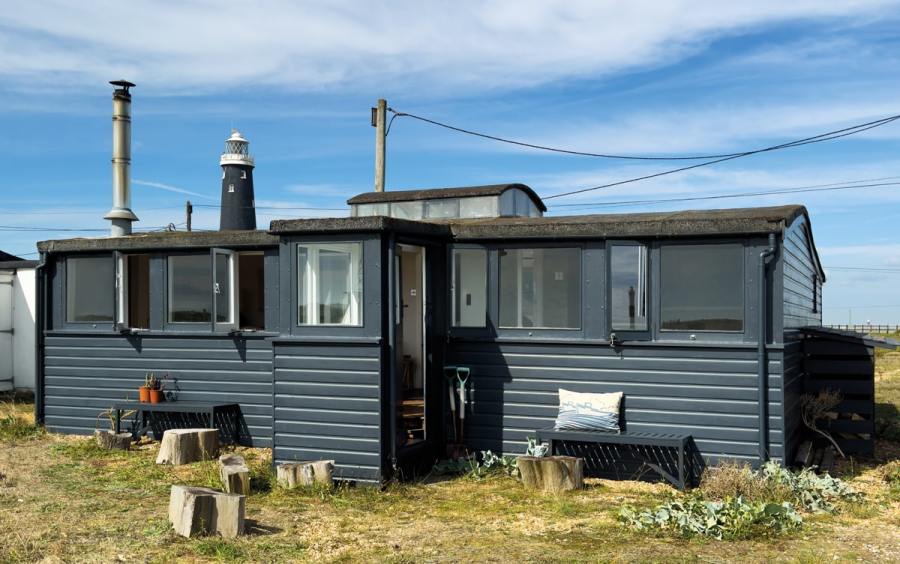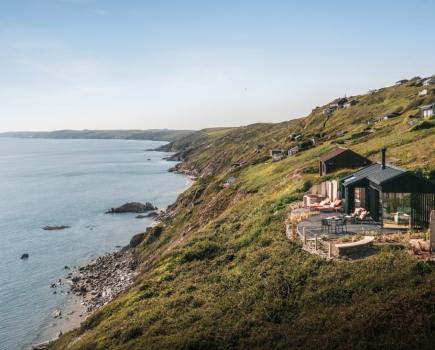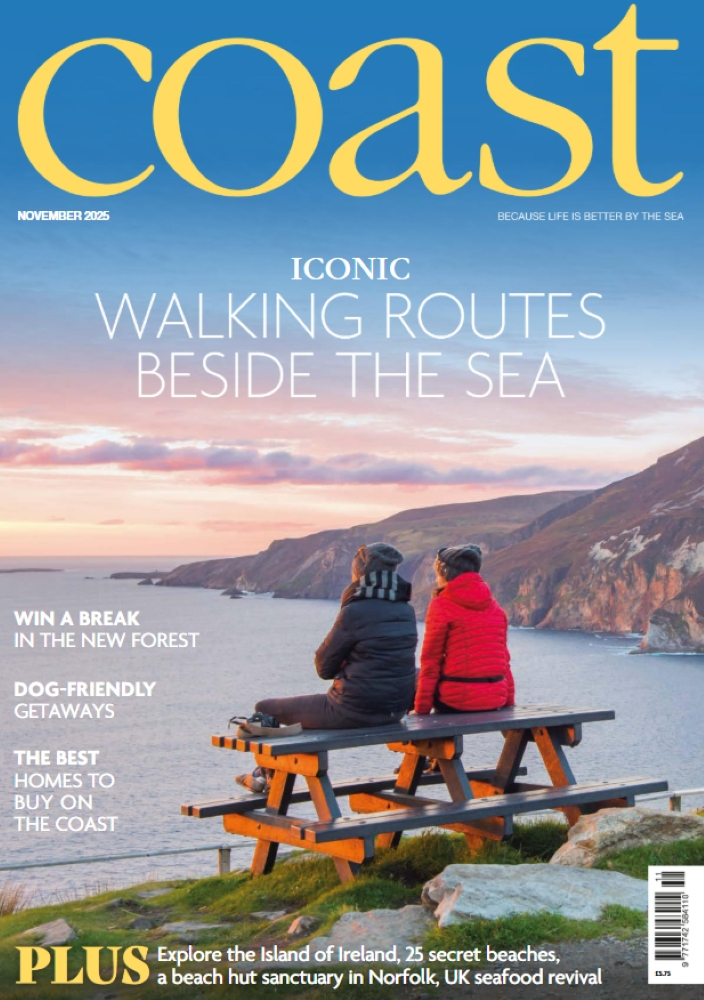Mark Hampshire and Keith Stephenson of iconic British homeware brand Mini Moderns show us around their beautiful railway carriage home in Dungeness
Words Kathryn Ferry
‘We love nautical collectables, but we do slightly have to rein ourselves in. We’ll look at something and think perhaps it’s too much but then, if there’s one place where we’re allowed to put some boats, it’s going to be here.’
Mark Hampshire and Keith Stephenson, the creative minds behind interiors brand Mini Moderns, are talking about their railway carriage bungalow at Dungeness on the Kent coast, which has recently been reclad, and refurbished using designs from their latest Travelogue Collection. When they first bought the house 12 years ago, they were strict about wanting its look to reflect the locality. But, after a decade of inhabiting it: ‘We felt like we could give ourselves licence to be a bit more playful with the space, and it has sort of re-injected a bit of joy.’
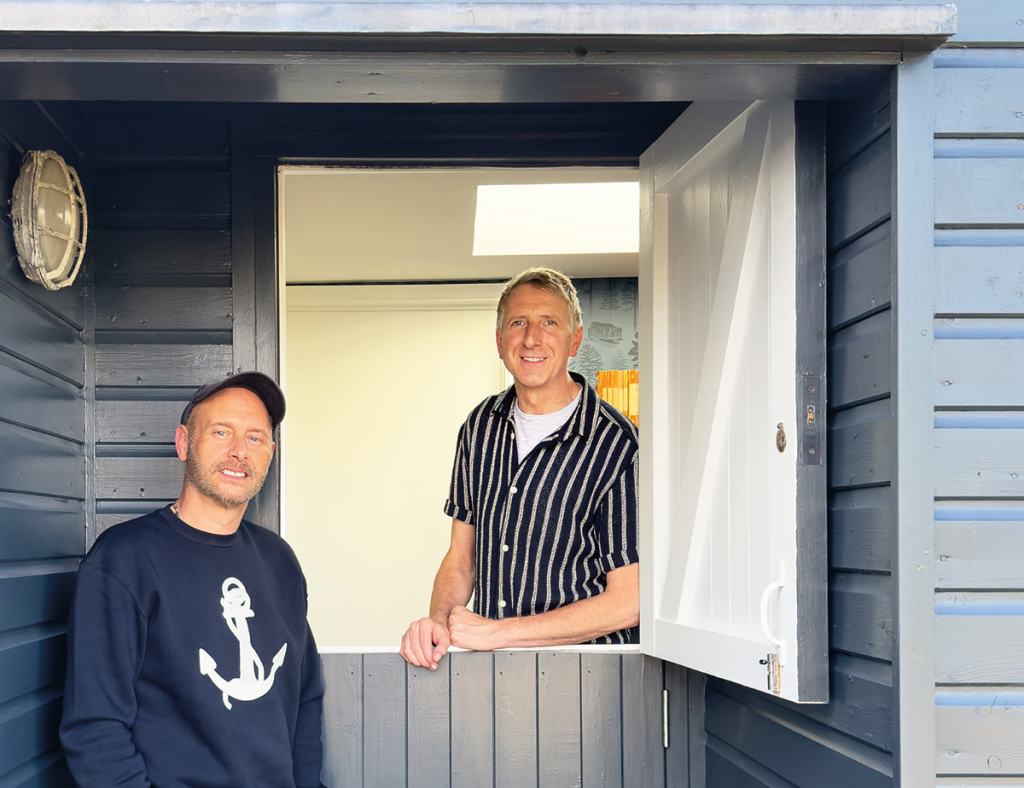
The new patterns may be inspired by far-flung places but there are coastal resonances throughout, some of which have become more obvious since the pair have seen how the wallpapers and fabrics work in their Dungeness setting.
Often described as a ‘cult Brit homewares brand’, Mini Moderns was established in London in 2006 after Keith and Mark met through work at a design and branding consultancy. Their backgrounds and interests brought them together, including memories of childhood visits to the Yorkshire coast – in Keith’s case to Whitby, and for Mark, who grew up near Leeds, to Filey. Though they had independently come to know and love Dungeness, they didn’t think they’d ever be able to own a property there.
Keith recalls how it had been a popular location for 1990s photo shoots when he was working for fashion brands Red or Dead and Dr Martens: ‘But there was this myth around Dungeness that you couldn’t buy a place if you weren’t local or didn’t have family there.’


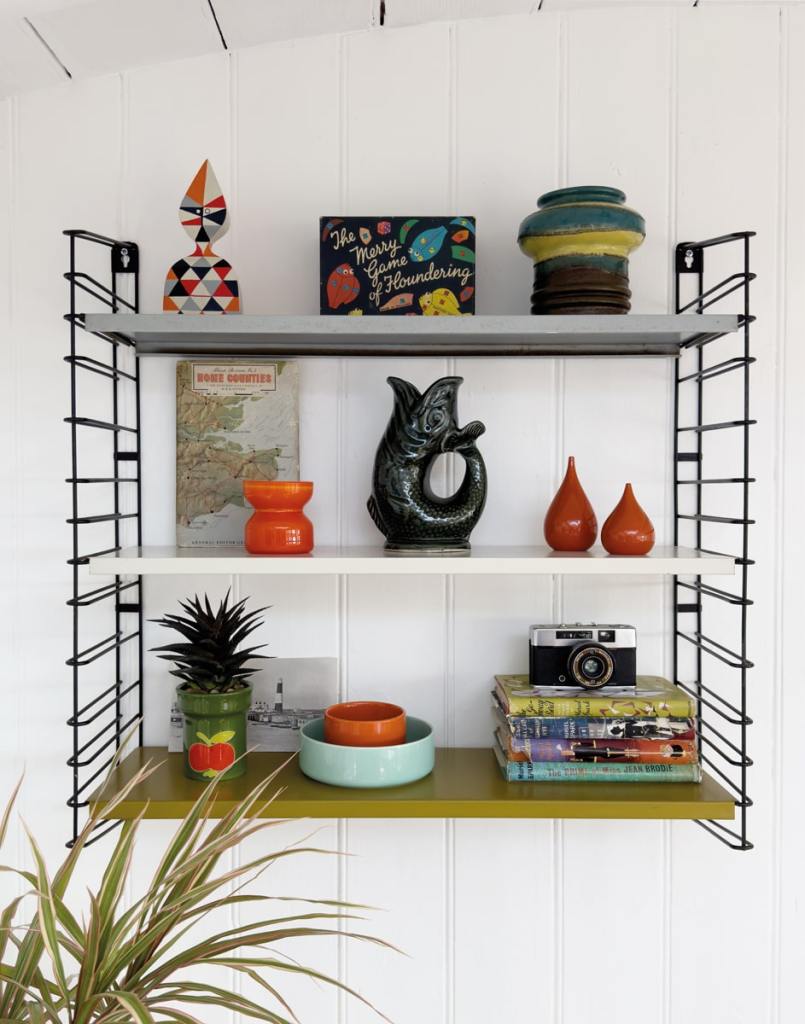

DREAM PROPERTY FOUND
The pair kept on visiting, often as the final stop after a day of browsing the antique shops in Rye, East Sussex, just to get their fix of staring out to sea. Then, they saw a couple of properties for sale online and decided to take a look.
‘One was really, really expensive,’ says Keith, ‘and the other one wasn’t! We went to see the little railway carriage and it just felt more “us”. We didn’t need a big space.’
Walking in through the front door and turning into the main carriage living room they could ‘see straight down to the beach. The building itself was very unloved but that was all we needed to see. That was it – we could cope with the rest of it for that view.’
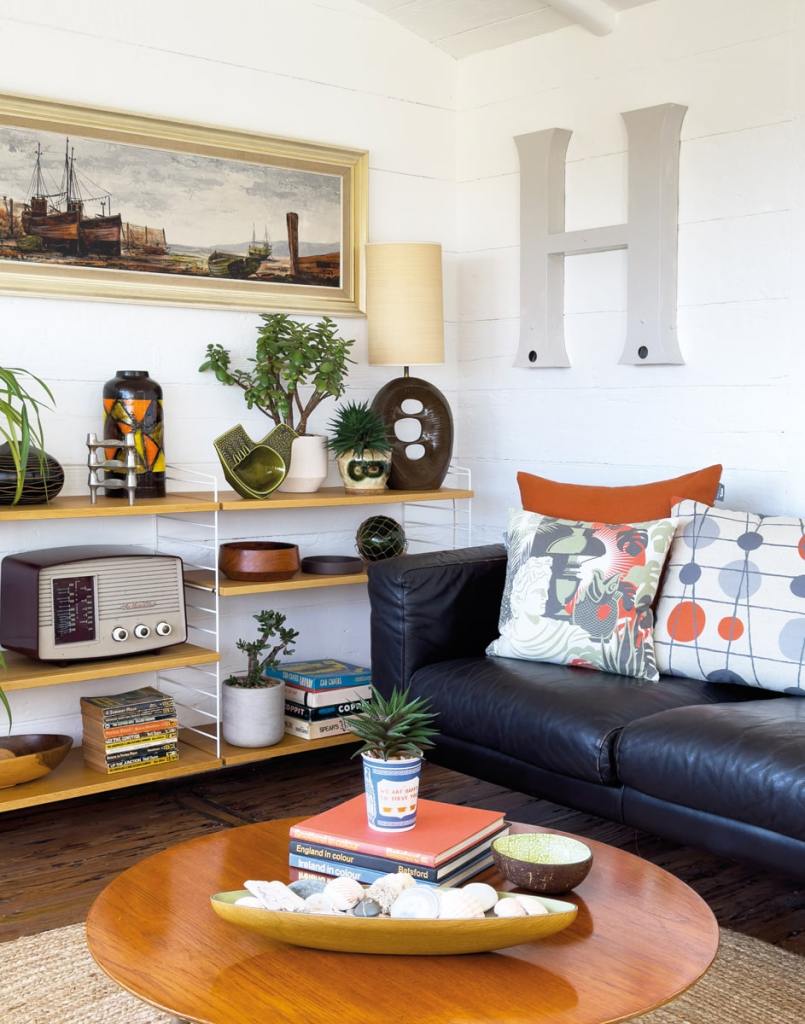
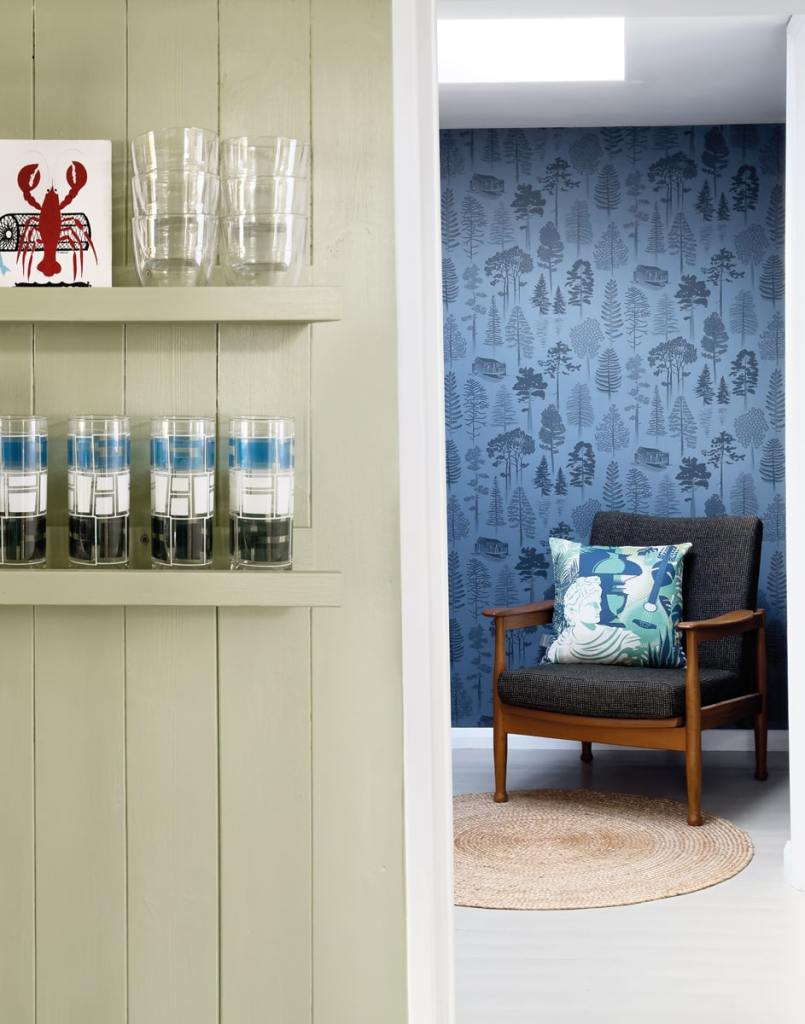


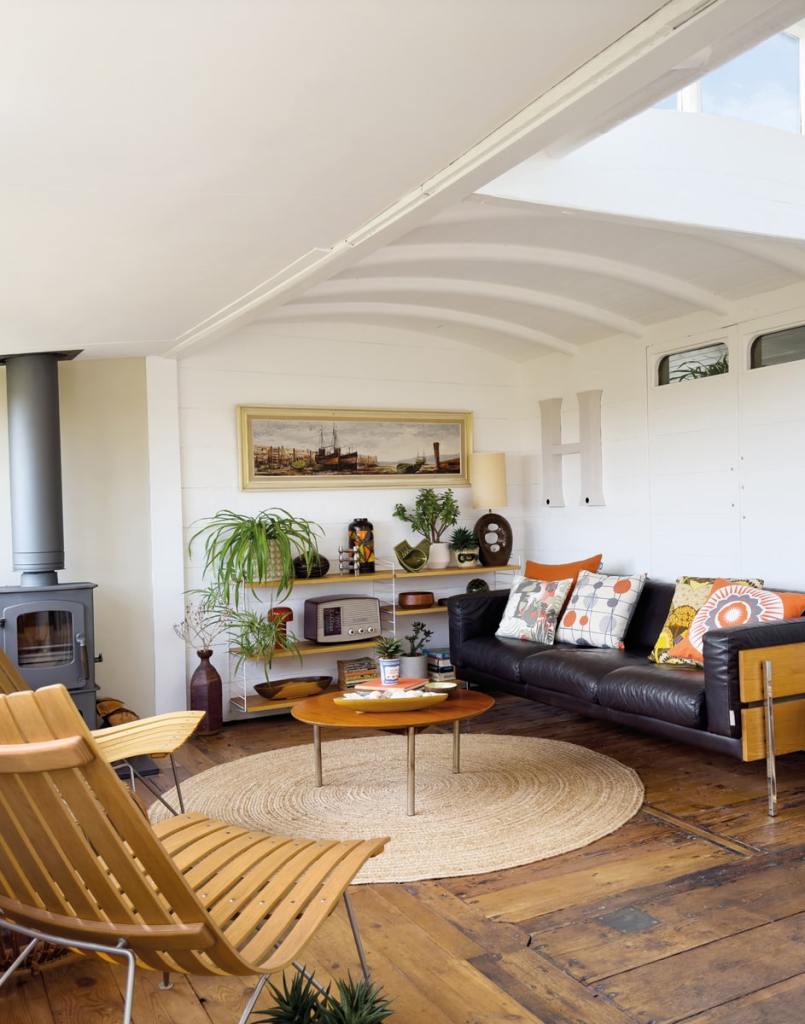
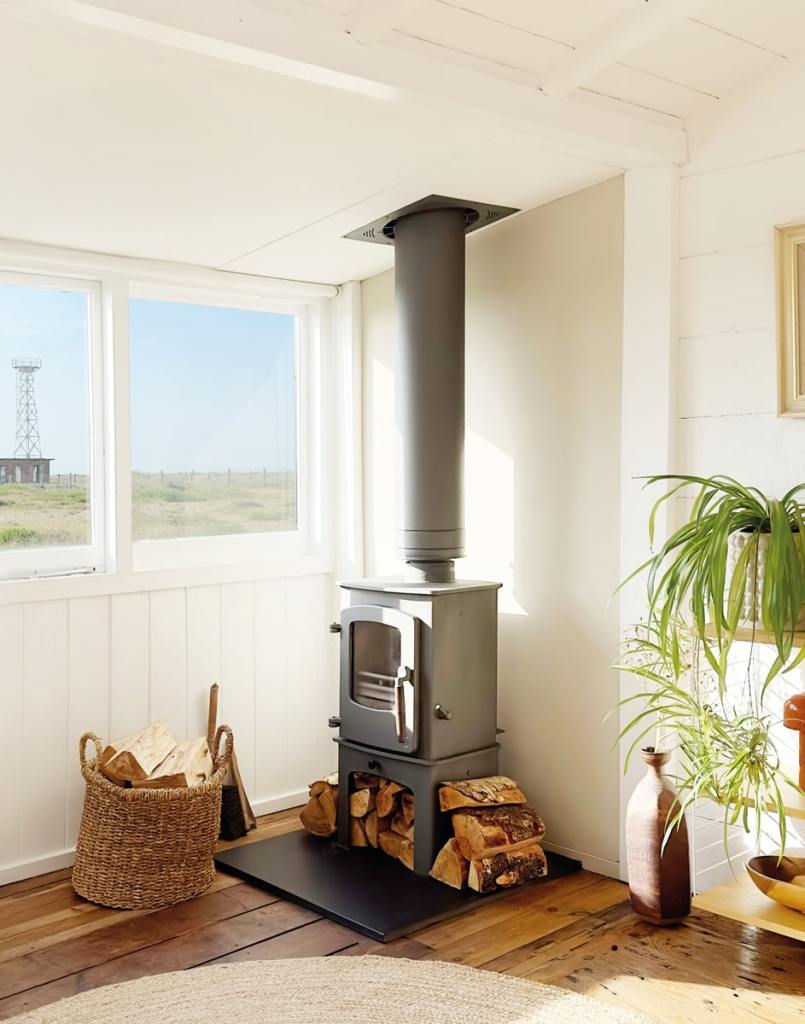
Both men recognise the DIY spirit of their early style influences, growing up in the early 1980s – just too late for punk but absorbing that attitude, buying up the unwanted Mid-Century Modern pieces at jumble sales and making their own clothes from 1950s fabrics.
They relished the task of stripping back their beach bungalow, peeling away the layers left by past residents and exposing the original wooden floor of the Victorian guard’s van. In fact, in the 1920s and ’30s, this type of building was the ultimate DIY holiday home. Redundant railway carriages were placed on cheap land around the coast, opening up a different seaside experience to independently minded working people who undertook the conversions themselves.
In 1927, a row of five such carriages was set down in Dungeness, all still in train formation. Keith and Mark have got to know members of the first family to own their bungalow and have made plenty of other friends. When film director Derek Jarman’s partner placed an order on the Mini Moderns website, Keith took the opportunity to mention that they had just bought a property at Dungeness and received an open invitation to Prospect Cottage, the most famous house on the beach, which in turn led to introductions to permanent residents, including the families still making their livelihood from fishing offshore. With only 100 houses, there’s a strong sense of community and the Snack Shack is its social centre – the place where everyone congregates to enjoy delicious seafood rolls and flatbreads.
INSPIRED BY THE COAST
All of this has fed into the Mini Moderns ethos of ‘pattern with a story’. The purchase of their bungalow inspired the Hinterland Collection, which referenced the Kent coast and all the things they were discovering about the environment there. It included a wallpaper called Dungeness which Keith recognises has not only become a part of their brand history but also a part of Dungeness history too.



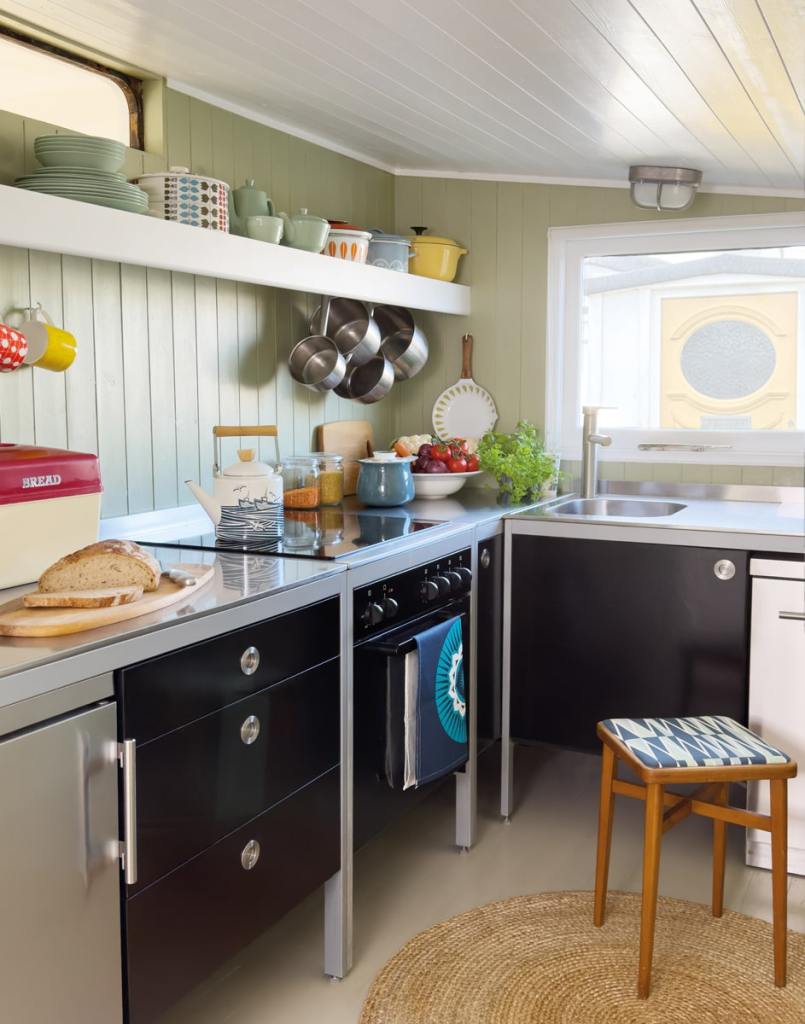
‘It’s really interesting looking back on it because some of the buildings that are in that design are not there any more – there are sheds in that pattern that have since blown down in the wind.’ For more than a decade, their bungalow was decorated with the Hinterland Collection, but maritime weather brings well-known maintenance challenges, and the need to reclad the exterior provided a chance to refresh the building’s interior.
The Travelogue Collection looks further afield to Sorrento, Copenhagen and even California, but many of the patterns have a nautical element which provides escapist accents in the smaller spaces.
The main living room of the bungalow is painted white to create a feeling of openness that is enhanced by the changing skies outside the many windows as well as the additional natural light from the upper lantern, that once allowed a Victorian railway guard to survey the length of his train. In the bathroom, the walls have been redone in the sunshiny, Sorrento-based plate pattern which Mark feels is very in keeping with the aspirations of previous residents. ‘Those souvenir plates look like something that could have been in the house when we bought it, that’s kind of the way it was decorated. I can imagine somebody buying china like that in the 1950s and displaying it in our little bungalow in Dungeness as a memento.’
The sailing ships and backdrop of Copenhagen’s bustling Nyhavn waterfront district in the spare room’s green wallpaper also led Mark and Keith to muse about the shipbuilding past of nearby New Romney or the old Rye Harbour, layering local stories on top of the original pattern inspiration. Another example of shifting meanings appears in the Pavilion print cushions, which are based on the Abacus Screen designed for the 1951 Festival
of Britain. In the context of the beach bungalow, the pattern speaks more of nets and buoys. ‘We just can’t help it,’ says Keith, ‘even our non-nautical prints look nautical here.’


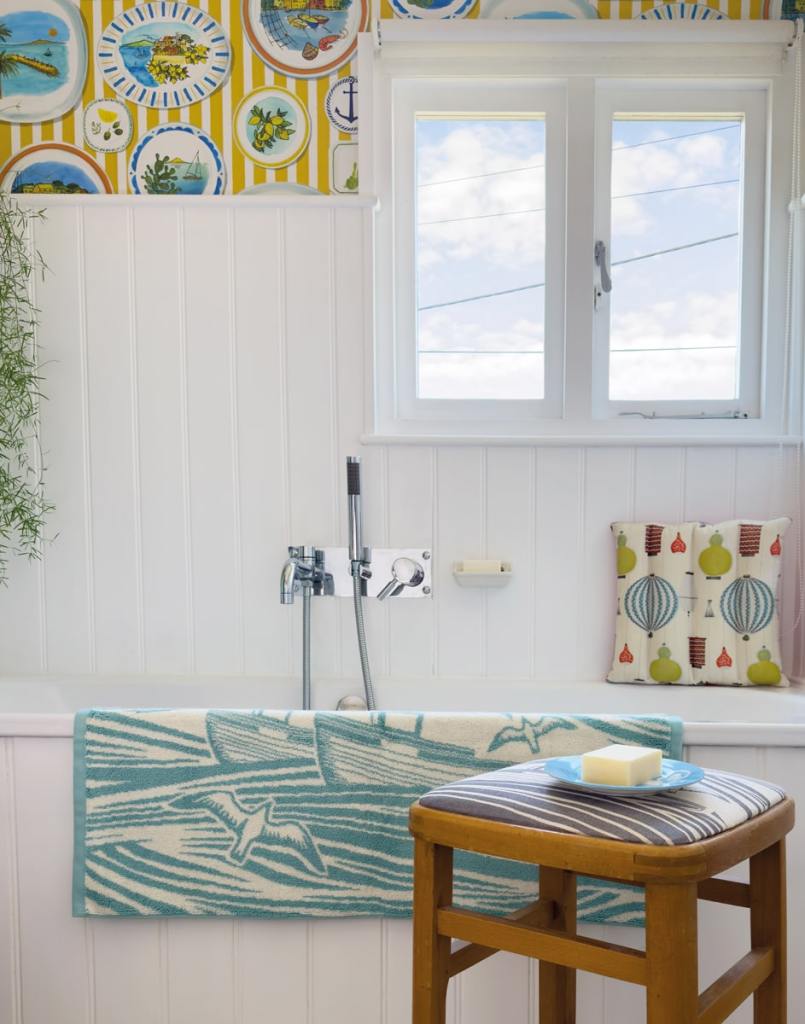

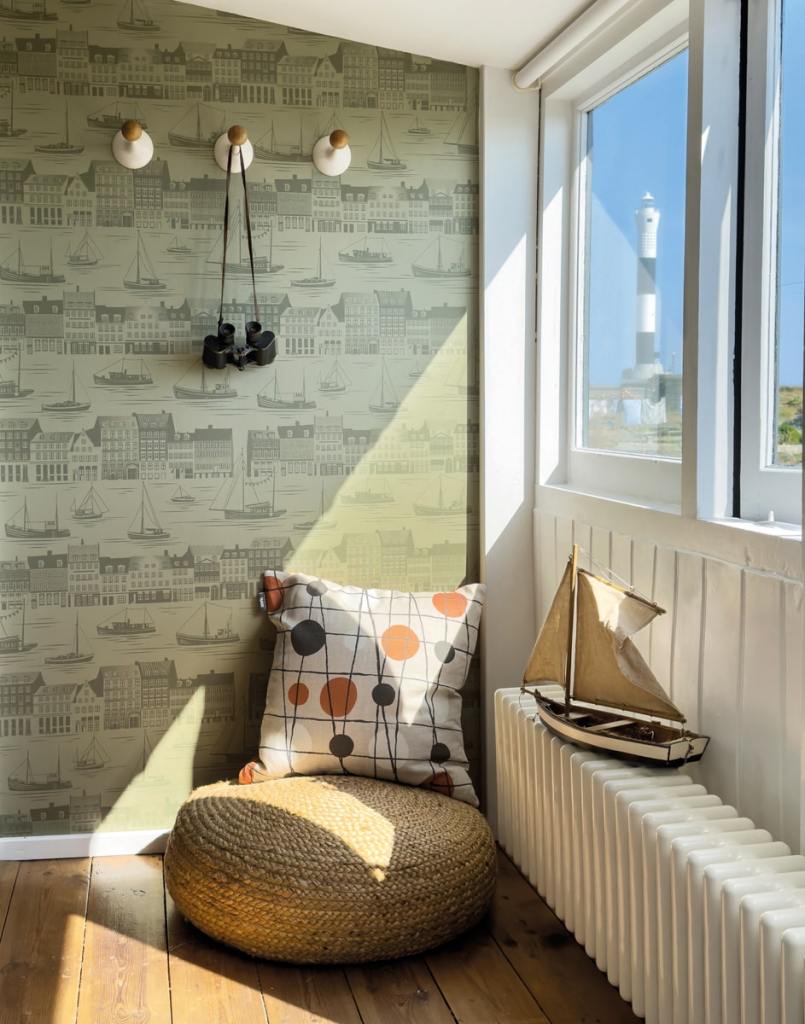

SALVAGED FINDS
It’s all tied together by some wonderfully serendipitous finds, like the huge model yacht they salvaged from the local recycling centre and the long, thin boat painting which fills the big arch of the carriage’s white end wall. With a vague plan in mind, they went to a Whitby antiques fair and found the artwork sitting on the floor as they walked in. ‘We’d bought it within about two seconds – we didn’t even ask the price, we just said: “We need that!”’
Now everything is finished, they can enjoy being in the place they love, seeing the seasons change and absorbing the unique landscape of Britain’s only desert, whatever the weather. For Mark, the most atmospheric experience is lying in bed at night with the foghorn going off, when the coast literally dissolves away and it feels like being at sea. Keith relishes the excitement of being in their little cabin as a storm rages outside. Newly restored, their carriage bungalow on the beach is ready for all the future stories yet to be written.
For more information, visit minimoderns.com.

